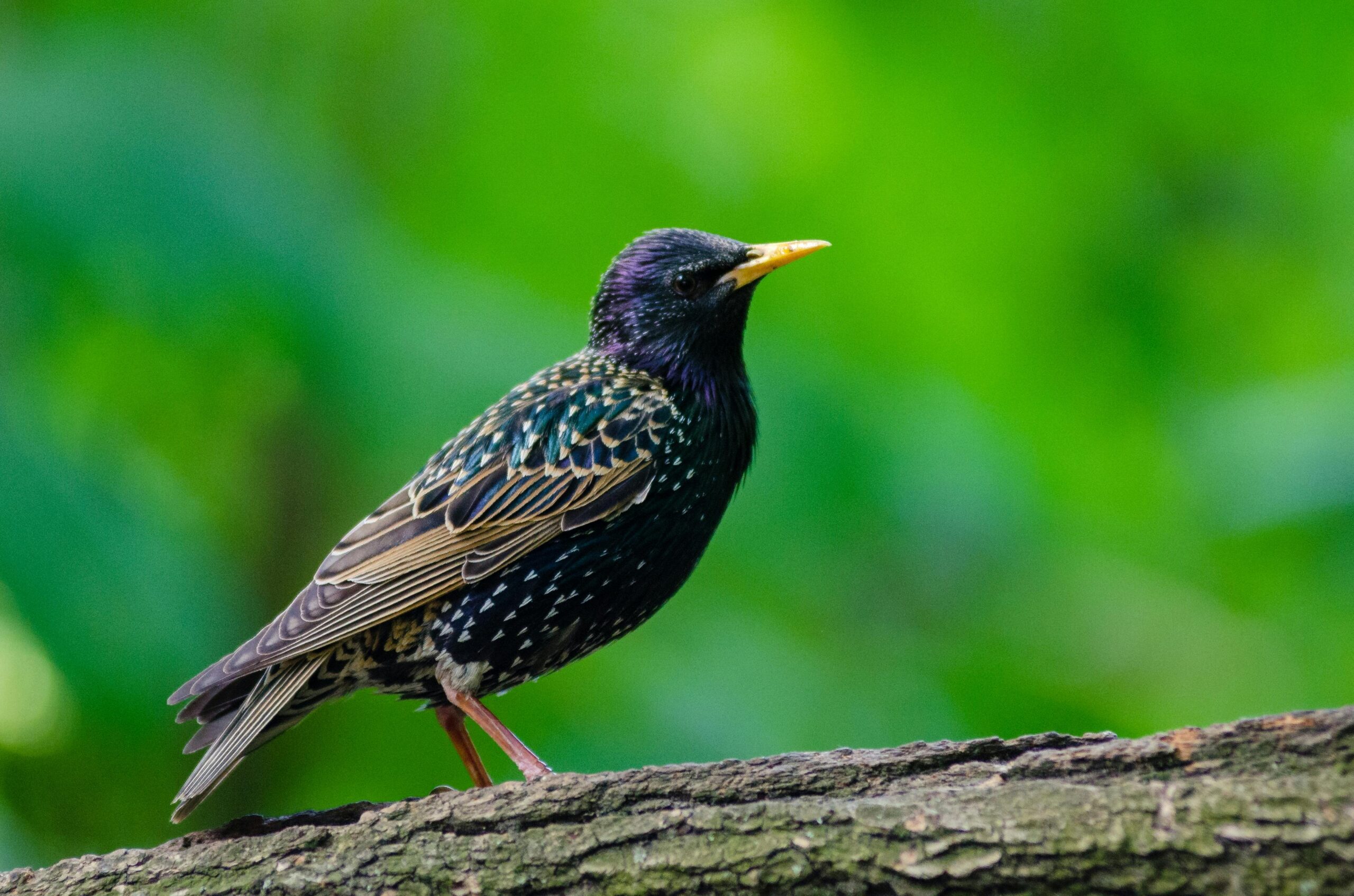Introduction: In the vast and diverse realm of bird species, starlings emerge as a captivating enigma. Often overshadowed by more flamboyant avian counterparts, these unassuming birds possess a unique charm that becomes apparent upon closer inspection. Join us on a fascinating exploration of the world of starlings, uncovering their distinctive characteristics and shedding light on their often-overlooked presence in our surroundings.
Who are Starlings? Starlings, members of the Sturnidae family, are small to medium-sized passerines known for their remarkable adaptability and intelligence. With distinctive iridescent plumage that gleams in the sunlight, these birds are not easily dismissed once noticed. Ranging in size from 7 to 9 inches, starlings boast a unique blend of elegance and resourcefulness that sets them apart in the avian kingdom.
Where do Starlings Live? Starlings are remarkably versatile when it comes to their habitats. Originally native to Europe, Asia, and Africa, they have successfully adapted to a diverse range of environments worldwide. From lush woodlands and grassy meadows to bustling urban landscapes, starlings have proven their ability to thrive in the face of changing ecosystems, making them a common sight for observant bird enthusiasts.
The Starling Symphony: Communication and Mimicry One of the most intriguing aspects of starlings is their vocal prowess and ability to mimic an array of sounds. Their melodic calls and intricate songs serve not only as a means of communication within their flocks but also as a testament to their intelligence. Starlings are known to mimic not only the sounds of other bird species but also human-made noises, showcasing their adaptability in an ever-evolving world.
Starling Murmurations: Nature’s Aerial Ballet Perhaps the most mesmerizing spectacle associated with starlings is the phenomenon of murmurations. These breath-taking displays involve thousands of starlings moving harmoniously through the sky, creating undulating patterns that seem almost choreographed. Scientists believe murmurations serve multiple purposes, including predator evasion and information sharing among the flock, underscoring the complexity of starling social dynamics.
The Ecological Impact of Starlings Starlings play a multifaceted role in their ecosystems, impacting both the natural environment and human landscapes. On the positive side, they contribute to pest control by voraciously consuming insects harmful to crops. However, their introduction to non-native regions has sometimes led to competition with local bird species and raised concerns about agricultural damage.
Q1: Do starlings migrate? A: Yes, starlings are known for their migratory behavior. While some populations are resident year-round, others undertake seasonal migrations in search of food and suitable breeding grounds.
Q2: Why do starlings migrate? A: Starlings migrate for various reasons, including changes in temperature and food availability. Migratory behavior helps them optimize their chances of survival and reproduce in more favorable environments.
Q3: When do starlings migrate? A: The timing of starling migration varies based on geographical location and environmental factors. In general, migrations often occur in the spring and fall as they travel between breeding and wintering grounds.
Q4: Are starlings protected? A: In many regions, starlings are not protected by law. They are considered invasive species in some areas, leading to limited legal protection. However, regulations can vary, so it’s essential to check local wildlife protection laws.
Q5: What is the average lifespan of a starling? A: Starlings typically have a lifespan of around 2 to 3 years in the wild. However, factors such as predation, environmental conditions, and food availability can influence individual lifespans.
Q6: How do starlings choose their nesting sites? A: Starlings are adaptable nesters, often choosing cavities in trees, buildings, or other structures. The choice of nesting site is influenced by factors such as proximity to food sources, protection from predators, and the availability of suitable materials for nest construction.
Q7: How do starlings contribute to pest control? A: Starlings are voracious insect feeders, playing a vital role in pest control. They consume a variety of insects harmful to crops, making them valuable allies for farmers and gardeners.
In the quiet corners of our world, starlings quietly contribute to the rich tapestry of nature. From their adaptability to their mesmerizing murmurations, these birds invite us to appreciate the marvels that surround us daily. The next time you hear the melodious trill of a starling or witness a murmuration painting the sky, take a moment to acknowledge the intricate beauty woven into the seemingly ordinary. In understanding and appreciating the world of starlings, we find ourselves enriched by the wonders of the natural world.

